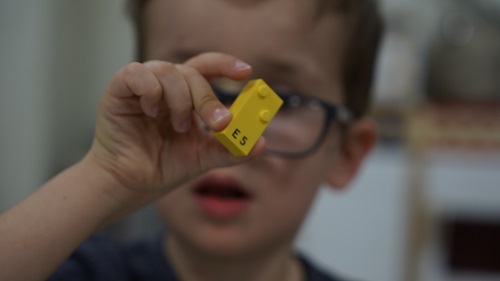By Ron Hooton, Vision Australia CEO
There’s no doubt of the challenges schools have faced over the past two years as they grapple with how to deliver education while dealing with all the COVID pandemic has had to throw at them.
But as we begin a new school year with a focus on keeping students in the classroom, it’s also an important time to consider the education of students who are blind or have low vision and the need for inclusive schools.
Educational barriers
No parent should have to worry whether their child’s school environment will be safe, supportive and provide the best learning environment
However, many students who live with disability face uncertainty around the quality and safety of their school environment which impacts their ability to receive a quality education.
A 2020 survey by Vision Australia revealed that students who are blind or have low vision face several challenges including a lack of access to material in accessible formats, inadequate support from specialist staff, and common occurrences of discrimination, harassment, or victimisation.
27% of respondents indicated that they or their child had not been provided assistance from specialist staff with training in working with children who are blind or have low vision.
Concerningly, 40% of respondents wanted to make a complaint regarding their child’s education, however, did not go through with it.
The undeniable fact is that students who are blind or have low vision deserve the same right to a quality education as any other child.
While we’ve seen improvements in the education space in recent years, there’s still much to be done to ensure children in our community are truly incorporated into schools.
Caption: Children who are blind or have low vision must be supported to learn alongside their peers.
Creating a supportive environment
We understand that many schools and educators may not have extensive our experience with students who are blind or have low vision.
That’s why our message to schools is that Vision Australia is more than willing to help create accessible and inclusive spaces. It’s also important that schools understand it’s often simple changes that can have a huge impact for a student who is blind or has low vision and any modifications made now will benefit students into the future as well.
For example, I think of Jacob a student in western Sydney. After consulting with Vision Australia, Jacob’s school painted obstacles such as surfaces and poles in contrasting colours, ensuring he is able to navigate safely around school.
This simple change has not only helped Jacob, but it’s made the school environment safer for all.
Beyond the infrastructure of schools, there’s also plenty of support that can be provided around the educating of students who are blind or have low vision.
No one can deny learning to read and write forms the backbone of any education, but 25% of respondents to our 2020 survey said the opportunity to learn braille at school had not been provided.
Given the range of aids and equipment available to help students learn braille, this is extremely disappointing. Refreshable braille displays and similar have made braille increasingly accessible and convenient, while other advancements in recent times have brought braille further in to the mainstream.
We’re extremely proud of our partnership with the LEGO® Foundation to bring LEGO® Braille Bricks to Australia and provide them to schools to support children who are blind ort have low vision to learn through play.
Braille is not the only means of accessing information for children who are blind or have low vision. From magnifiers to the latest in wearable technology, there is a huge range of equipment to support blind and low vision students.
Schools need to ensure that students who are blind or have low vision feel comfortable and supported to use whatever aid or equipment they need to learn and succeed alongside their peers.

Caption: LEGO(R) Braille Bricks are just one of many educational aids to support children who are blind or have low vision in the classroom.
Looking to the future
There’s no denying blindness or low vision can present challenges in the classroom, but our message to schools is that all necessary support should be provided to students who need it.
Schools don’t have to do this on their own. The equipment and expertise is available to support them in making their environment as inclusive as possible.
To all schools and educators, we’d as ask you to engage with parents, organisations such as Vision Australia or others to ensure children who are blind or have low vision get every opportunity to enjoy and succeed at school.










